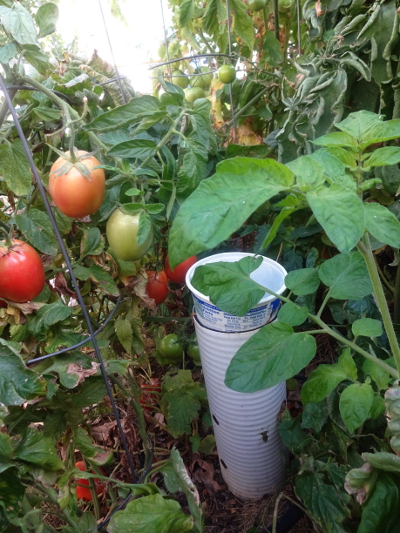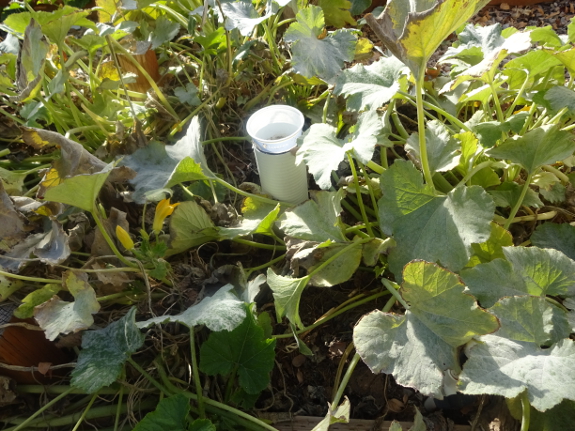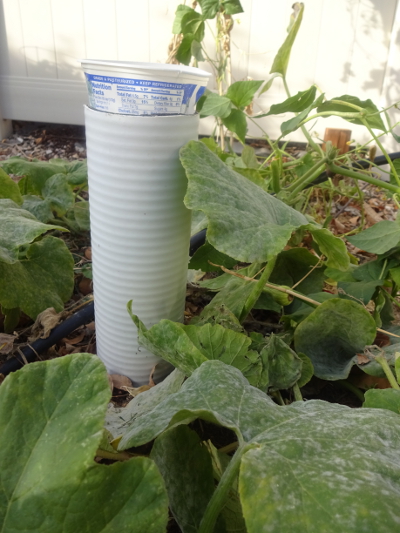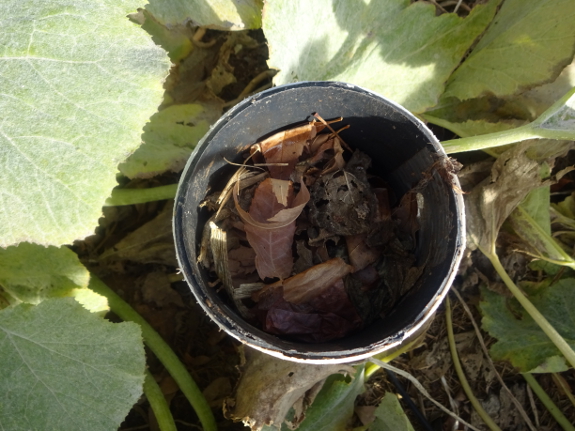
Worm Towers and In-Garden Composting, Utah Cold Desert, Zone 5
 Note from Anna: A huge thank you to Sarah Oler, who sent me this description of her method of using worm towers to encourage ordinary earthworms in her garden. I've included a shortened version in my upcoming soil book, but her writeup was far too good to be lost. So I thought I'd share the longer version here.
Note from Anna: A huge thank you to Sarah Oler, who sent me this description of her method of using worm towers to encourage ordinary earthworms in her garden. I've included a shortened version in my upcoming soil book, but her writeup was far too good to be lost. So I thought I'd share the longer version here.
Benefits of Using Worm Towers:
- Great for people with limited composting space in their yard
- Very easy to construct, install and can be made from free or cheap materials
- No smell and pest-resistant
- You don't need to worry about turning compost piles and spreading the nutrients

Cons:
- Since the worms are responsible for spreading the castings around the garden box there is an uneven concentration of nutrients around the tower.
- Limited composting space for all of your biowaste. This works great for kitchen scraps and small amounts of excess organic matter, but it isn't large enough to incorporate large amounts of landscaping waste.
- It can be hard to add biowaste to the towers when your garden is at full production. You have to fight your way through jungles of tomato plants to add your biowaste.
 Construction:
Construction:
Use 4 to 6 inch diameter
white or gray PVC pipe. Black pipe might make the compost too hot to be a
suitable environment for worms. I also don't recommend using corrugated
irrigation pipe. Not only did the drill create jagged holes, but I had
to cover up the predrilled holes in the top half of the pipe that stick
up out of the ground.
Cut the pipe into 2 foot
sections and drill 1 to 1 1/2 in holes all around the bottom half of the
pipe. Cover the top with a concave cup or bowl with tiny holes punched
into the bottom. This will provide air circulation as well as capture
water, keep out flies, and keep your compost moist. I used small
16 oz plastic containers, like the kind that holds sour cream, and I
poked many small holes in the bottom with a hot needle.
Installation:
Dig a hole one foot deep
where you want to put your tower. Insert the pipe into the hole and
backfill with soil. Be careful not to push the soil through the holes.
You can also add a layer of straw or leaves around the pipe to prevent
soil from falling into your pipe. Make sure that all the top holes are
properly covered with at least an inch of soil or mulch and add a few
inches of leaves or straw to the bottom of your worm tower. I recommend
placing your worm towers about every 3 feet apart.

How to Use Your Worm Tower:
Add your biowaste, such as
fruit and vegetable scraps from the kitchen, including large
chunks like mango pits or small pieces like carrot peelings. You can use
a large funnel to make it easy to fill your tubes or you can put your
biowaste in a bag that is tightly fitted over the tower opening and dump
in the contents.
Top each addition of biowaste
with carbon-rich sources such as dry leaves, shredded newspaper or
straw to balance your C:N ratio. Before adding another layer, use a long
thick stick to gently push down your previously added material.
Pull out your tubes each spring and empty the castings to use for starting seeds or top dress your garden.
Want more in-depth information? Browse through our books.
Or explore more posts by date or by subject.
About us: Anna Hess and Mark Hamilton spent over a decade living self-sufficiently in the mountains of Virginia before moving north to start over from scratch in the foothills of Ohio. They've experimented with permaculture, no-till gardening, trailersteading, home-based microbusinesses and much more, writing about their adventures in both blogs and books.
Want to be notified when new comments are posted on this page? Click on the RSS button after you add a comment to subscribe to the comment feed, or simply check the box beside "email replies to me" while writing your comment.
